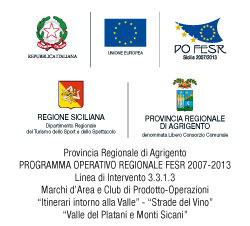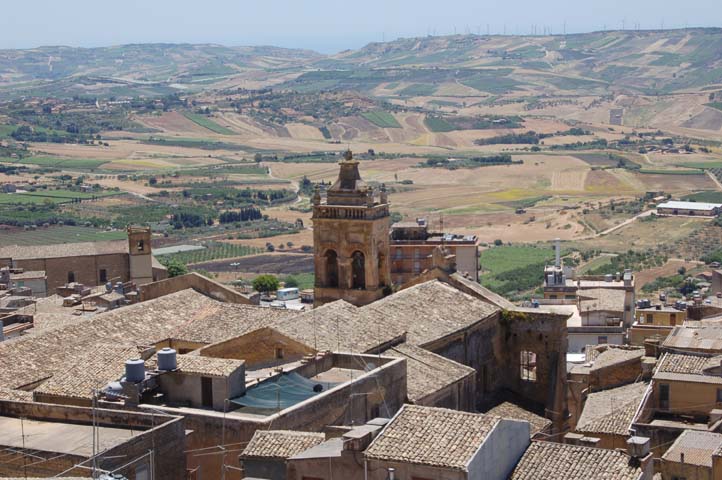
In the eastern part of the territory of Agrigento, 25 km from the capital is Naro, a city that has had great boost with the Baroque architectural and artistic testimonies that today in the city rank among the most interesting Baroque cities of the island.
It has a rich and multifaceted sediment archaeological, architectural and artistic that tells of a distant past and prestigious. For the location and the fertility of its vast territory since ancient times, Naro attracted the interest of many nations. Of prehistoric origin, the remains of a Greek necropolis and paleo-Christian catacombs.
Protagonist and witness of the historical evolution of Sicily, was founded by the Arabs who called Naro, from Nahar = Flame, and erected the castle on the ruins of a previous fortress.
In 1086, after a long siege, it was conquered by Roger the Norman who, expelled the Arabs fortified the castle and built the cathedral. Federico II in 1233 in Naro attributed the nickname "brilliantly radiant" with which even today is remembered and identified.
During the Middle Ages the city went through a period of prosperity and economic policy and was a center of recognized importance.
Naro still is admired for the many interesting civil and religious monuments of the Gothic style Sicilian adorning its territory and it values.
Rich in history, art, natural beauty, the city reached its peak during the seventeenth century, coinciding with the spread of Baroque art. It was during this period that was enriched with impressive monuments that reflect the style, taste and spirit of the time.
Queen of the Baroque in the province of Agrigento, Naro reveals its visitors, with pride and generosity, the presence of complementary tourist paths and singular beauty.
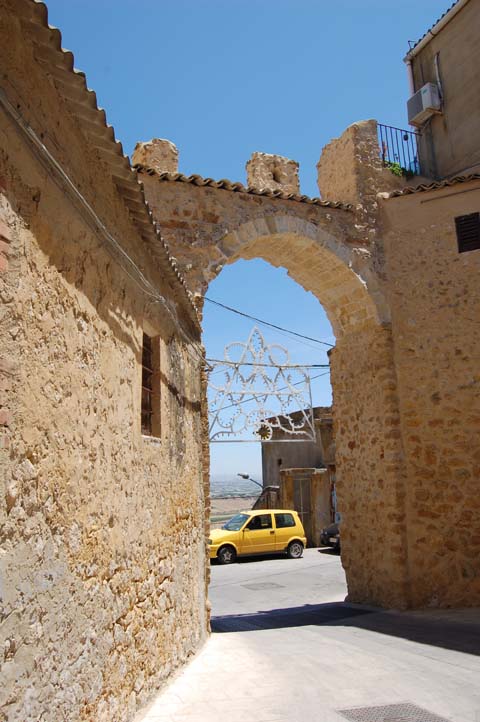 Monuments to visit
Monuments to visit
To publicize the most of this wonderful city, we present thematic routes
Gothic path
It 'a spectacular route that creates excitement and interest that leads to visit the monuments of the Middle Ages.
Mighty and austere, always in control and defense of the territory, the Chiaramonte Castle (XIII-XIV century), named after the illustrious family that dominated Naro for more than a century, is visible from all over the surrounding plain and beyond. Symbol and metaphor of the city approved its history and legends, like the one who wants it haunted by the ghost of Madonna Giselda ...
Declared a National Monument in 1912, it was attenzionato several renovations that have it delivered to the territory. Engaging the visit of the interior, from the breathtaking views to be enjoyed from its summit. The visit to the Castle certainly does not go unnoticed and suggests good of those who protects and enhances treasures "big" as this charming manor house, one of the largest in Sicily.
Majestically nestled next to the ancient Castle Norman Cathedral it tells the glorious past of ancient Naro. It was originally a church built by Ruggiero D'Altavilla in 1809 and dedicated to Mary SSAssunta by the Angels. In the next century it acquired the dignity of the Mother Church and in 1398 that of Duomo.
Extraordinary visual and emotional impact the spectacular stairway of 209 steps linking the Duomo with Via Dante. It was inserted in the '700 with the intention of spreading the Christian message of high repute life as a difficult and painful journey that leads to salvation of the soul.
In the old town of Naro you can admire a real jewel: the Church of St. Catherine. And 'the most representative monument of Gothic-Norman, with a unique imprint Chiaramonte which gives the whole a wrapping glamor. The church, built by Matthew Chiaramonte by Frederick III, restored several times over the years, it remains one of the most majestic of Sicily.
National Monument since 1919, its three naves, houses a baptismal font of 1400, the wheel symbol of the martyrdom of St. Catherine, the Keys of the Church. Admirable the wooden ceiling in its unusual invoice. But it all together, majestic and refined, to make this place a sacred place for the soul, beyond time and space.
Baroque trail
THE baroque path winds through the visit of many churches that are the pride, wealth and peculiar attractiveness of Naro.
The first stage leads the tourist via Dante to admire the Church of SSSalvatore. Built in 1398 it has undergone major renovations during the Baroque period. Of nice-looking facade, in its original and very special physiognomy: rustic at the top, enriched with elaborate carvings of tufa, Baroque and spagnolesco the bottom. The interior has a nave, with frescoes by Domenico Provencal and other treasures worthy of admiration. Among all of a wooden crucifix of '700.
Further along is the Church of St. Nicholas of Bari, built in 1618 with the name of St. Joseph, transformed in 1765 in the parish dedicated to St. Nicholas of Bari. The reasons mannered type spagnolesco that adorn the facade reflect the style of the first Sicilian Baroque. The interior is decorated with stucco and valuable paintings. But the lure stronger comes from a baptismal font with the date 1490.
Near the same street you can visit the Mother Church. It dates back to 1619 the foundation of the Church that, only after the closure of the old cathedral, he acquired the nickname Mother. Natural recipient of substantial and valuable artistic heritage that belonged to the Cathedral, the Church has wonderful works of art. Paintings by Domenico Provencal, an artistic baptismal font, a marble statue of the Madonna della Catena and an original and poignant Crucifix in the act of expiring, emotionally catalyzing the interest of visitors. Next door is the Jesuit College, the artistically valuable portal in Baroque style.
In the square Father Favara one can enjoy views of the Church of St. Augustine. Its construction began in 1707, commissioned by the Augustinian monks, followed that the convent of the thirteenth century. The Church in Latin cross preserves artistic and precious works of art in wood: a crucifix of '500, a pulpit of the late sixteenth century, the statue of St. Francis Paola, an impressive body of 1770. Of the ancient monastery survives a magnificent portal that can be seen in the sacristy.
Garibaldi Square with the Church and the former Convent of Saint Francis, founded in the thirteenth century, reworked and expanded, took its present form in the seventeenth century. The facade of the church is the highest manifestation of the Sicilian Baroque style, particularly embellished with ornamental elements. The single nave interior manifests itself rich in works of art, statues, paintings, stucco. On either side of the moving reflection two paintings depicting "The Good Death" and "The bad Death".
Next to the church the former Convent of St. Francis from 1890 is home to the Town Hall. To access it you have the privilege of crossing the eighteenth-century cloister that welcomes regulars and visitors with the charm of the time.
Finally must visit the Church of San Calogero, the patron saint. Built in the sixteenth century on the site where he had lived as a hermit, also it attracts many devotees from neighboring municipalities. Feature baroque facade and the interior with a nave in Renaissance style, decorated with paintings by contemporary artists. The visit of this place because it excites and involves via a staircase located to the right of the aisle, you can access an underground church in which is the cave where the saint lived as a hermit.
Not to be missed
The Archaeological route
Large and of considerable archaeological heritage of Serra Furore and the early Christian catacomb complex.
Of note is the existence of three permanent exhibitions that highlight the cultural stature of Naro and amplify the tourist offer:
See "The genius of Leonardo"
Permanent exhibition inside the castle Chiaramonte. "The genius of Leonardo da Vinci", a blend of science and art of exceptional value. In the beautiful medieval setting are exposed working machines and futuristic inventions of Leonardo, the scientist - inventor, and so much more, lived in the fifteenth century.
The models of the machines, about 70, faithfully represent the drawings of Leonardo and are made to size or scale, in wood, metal and fabric. The copy of the design and multilingual descriptive tables allow visitors to operate the machines and see how it works. A chance of inclusive knowledge, art, culture, to experience moments of genuine emotion. Info: 0922 95300
Museum of Clothes
Permanent exhibition in the Castle Chiaramonte, offers the opportunity to admire the sixteen vintage clothes (of which fourteen female and two male), a military uniform of World War I and a number of women's accessories. A meeting with the past that intrigues, intrigues, involves. Info: 0922 95300
Museum of Graphics
Permanent exhibition c / o Palazzo Malfitano Via Piave. The interior of the fifteenth century Malfitano houses the permanent exhibition of graphics: a cultural space of significant value. On display are lithographs, etchings, aquatints, serigraphs of important contemporary artists and collezionisti.Una tourist opportunity for the city of Naro and an opportunity for knowledge and cultural growth for visitatori.Info: 0922 954403
In the end an invitation to those who love books and their prestigious "ancestors" to visit the library "Feliciana". Dating back to the second half of the seventeenth century, it is located in what was the Franciscan Convent, now the town of Naro. It has about 13,000 volumes, including books, manuscripts, incunabula of exceptional rarity. The most important is a parchment codex of the twelfth century "Breviarum Typis Gothicis Parchment Charta", the work of experts scribes, richly storied. The name of the library is linked to the name of the benefactor Happy Woman, sister of the prior Melchiorre Milazzo Naro, founder of the Library.

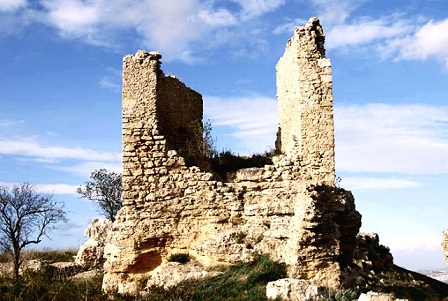 Archeological Site of Serra di Furore and the Paleocristian Catacomb Complex
Archeological Site of Serra di Furore and the Paleocristian Catacomb Complex
 Chiaramonte Castle
Chiaramonte Castle
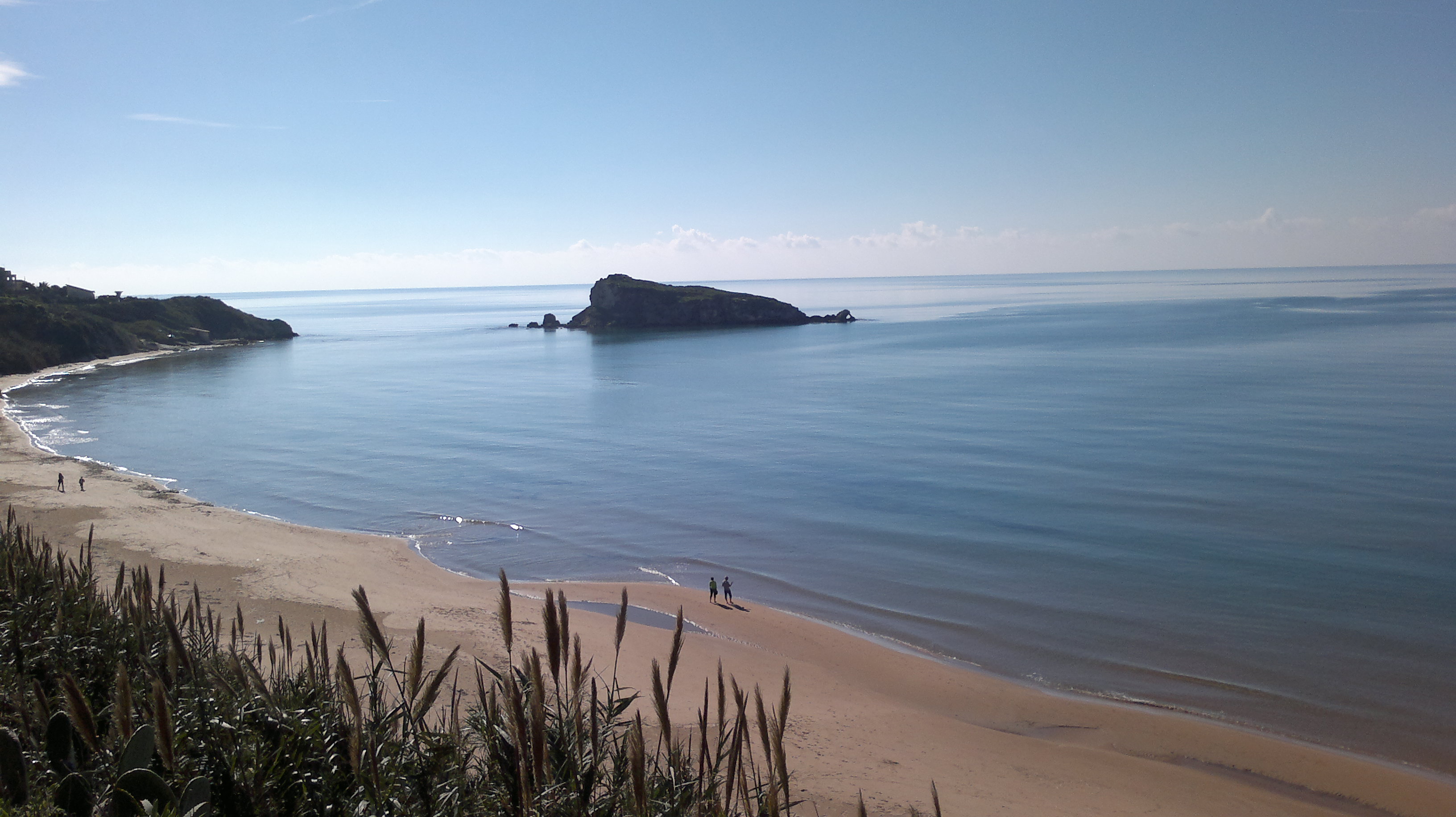 The discovery of the coast - 2 routes to the east between the sea and inland
The discovery of the coast - 2 routes to the east between the sea and inland
